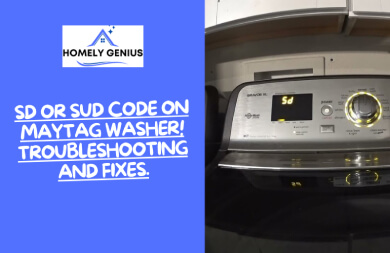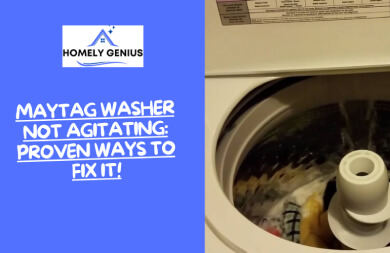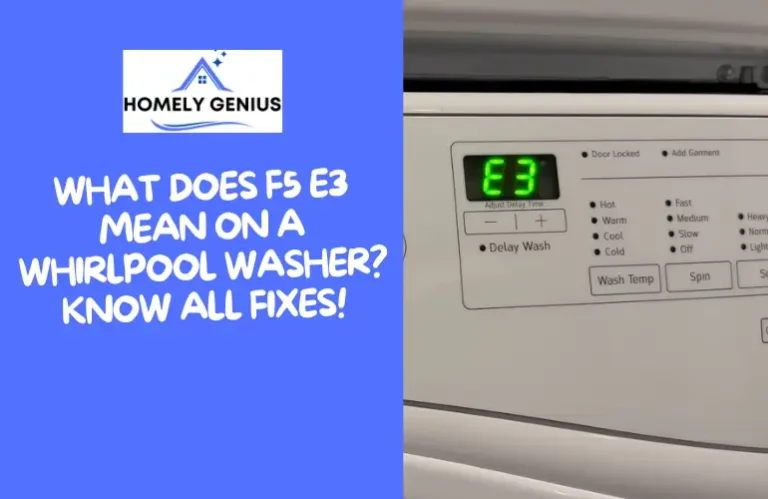Water Not Coming to Washing Machine: Quick Fixes and Tips

Water not coming to the washing machine often results from clogged hoses or a faulty inlet valve. Check these components first.
Experiencing issues with your washing machine can be frustrating, especially when water fails to enter the appliance. This problem can arise due to several reasons, but the most common culprits are clogged hoses and a malfunctioning inlet valve. Ensuring these components are clear and functioning properly can often solve the issue.
Regular maintenance and inspection can help avoid such problems and ensure your washing machine operates efficiently. Understanding the potential causes can save time and money, reducing the need for professional repairs. By addressing the issue promptly, you can restore your washing machine’s functionality and maintain the convenience of hassle-free laundry days.
Common Causes
Experiencing water issues with your washing machine can be frustrating. Understanding the common causes can help you fix the problem quickly. Here are some frequent reasons why water might not reach your washing machine.
Clogged Filters
One of the most common reasons is clogged filters. Washing machines have filters to prevent debris from entering. Over time, these filters can get clogged.
To check if this is the issue:
- Turn off the water supply.
- Locate the filter, usually at the back.
- Remove the filter and rinse it under running water.
- Reinstall the filter and turn on the water supply.
Regularly cleaning the filter helps maintain water flow.
Faulty Inlet Valve
A faulty inlet valve can also cause water issues. The inlet valve controls water entry into the washing machine.
Signs of a faulty inlet valve include:
- No water entering the machine.
- Water entering very slowly.
To test the inlet valve:
- Turn off the water supply.
- Locate the inlet valve, usually at the back.
- Disconnect the hoses connected to the inlet valve.
- Inspect the valve for blockages or damages.
- Replace the valve if necessary.
Replacing a faulty inlet valve ensures proper water flow.
Understanding these common causes can help you solve water issues in your washing machine. Regular maintenance of filters and checking inlet valves can prevent future problems.

Credit: www.reddit.com
Initial Checks
Water not coming to your washing machine can be frustrating. Start with some basic checks. These initial checks can help fix the issue quickly.
Power Supply
First, ensure that your washing machine has power. Check if the power cord is plugged in securely. Verify the outlet by plugging in another device. If the device works, the outlet is fine.
Look at the machine’s display panel. If it’s blank, check the circuit breaker. Sometimes, a tripped breaker can cause power issues. Reset the breaker and see if the machine starts.
Also, inspect the power cord for any damage. A damaged cord can prevent the machine from turning on. Replace the cord if needed.
Water Supply
Next, check the water supply. Make sure the water valves are open. These valves control the water flow to your machine. Turn them counterclockwise to open.
Inspect the hoses connected to the machine. Ensure they are not kinked or blocked. A kinked hose can stop water from reaching the machine.
Check the hose filters for any clogs. Sometimes, debris can block the filters. Clean the filters if they are dirty.
If you have a water pressure regulator, ensure it is set correctly. Low pressure can affect water flow to the machine.
| Initial Check | Steps |
|---|---|
| Power Supply |
|
| Water Supply |
|
Inspecting Hoses
When your washing machine isn’t filling with water, the hoses are a common culprit. Inspecting the hoses can help identify the issue. Below are key areas to inspect.
Kinks And Bends
Check the hoses for any kinks or bends. Straighten the hoses to ensure water flow. A kinked hose can block water from reaching the machine.
Follow these steps to check for kinks:
- Turn off the water supply.
- Disconnect the hose from the washing machine.
- Inspect the entire length of the hose.
- Straighten any kinks or bends.
- Reconnect the hose and turn on the water.
This simple check can often solve the problem. If the hose is damaged, consider replacing it.
Leakages
Inspect the hoses for any leakages. Leaks can cause water loss and prevent proper filling.
Here’s how to check for leaks:
- Look for wet spots around the hose connections.
- Run your hand along the hose to feel for moisture.
- If a leak is found, tighten the connections.
- If tightening doesn’t help, replace the hose.
Using a table can help keep track of your inspection:
| Inspection Point | Action |
|---|---|
| Kinks and Bends | Straighten or Replace |
| Leakages | Tighten or Replace |
Regular hose inspection can prevent many water flow issues.
Cleaning Filters
A common issue with washing machines is a lack of water. This often happens due to clogged filters. Cleaning these filters can restore your machine’s function. Let’s explore how to clean them.
Locate Filters
First, you need to locate the filters on your washing machine. Filters are usually found in two main areas:
- Inlet Filters: These are located where the water hoses connect to the machine.
- Drain Filter: This is found at the bottom front of the washing machine.
Check your user manual to find exact locations. Knowing the correct spots helps you clean efficiently.
Cleaning Process
Now, let’s go through the cleaning process step-by-step.
- Turn off the power and unplug the machine.
- Close the water supply valves to prevent leaks.
- Disconnect the water hoses from the machine.
- Remove the inlet filters carefully. Use a small brush to clean them.
- For the drain filter, open the access panel at the bottom front.
- Unscrew the filter and pull it out. Clean it under running water.
- Wipe the filter housing with a damp cloth.
- Reinstall both filters and reconnect the hoses.
- Turn on the water supply and plug in the machine.
Your washing machine should now work smoothly. Regular filter cleaning prevents future issues.
Checking Inlet Valve
Is your washing machine not getting water? The problem could be with the inlet valve. This valve allows water to enter the machine. Checking it can solve the issue quickly.
Identifying Issues
First, ensure the water supply is on. Then, inspect the inlet valve for blockages.
- Turn off the machine and unplug it.
- Locate the inlet valve, usually at the back.
- Check for any visible dirt or debris.
Use a flashlight to see inside the valve. If you find blockages, clean them out carefully. This might resolve the problem.
Replacing Valve
If cleaning does not work, the valve might need replacing. Follow these steps:
- Turn off the water supply.
- Unplug the washing machine.
- Detach the water hoses from the inlet valve.
- Remove the screws holding the valve in place.
- Install the new valve and secure it with screws.
- Reconnect the water hoses and power supply.
After replacing the valve, turn on the water supply. Run a test cycle to ensure everything works properly.
| Step | Action |
|---|---|
| 1 | Turn off water and unplug machine. |
| 2 | Detach water hoses from valve. |
| 3 | Remove old valve and install new one. |
| 4 | Reconnect hoses and power. |
These steps ensure your washing machine gets water properly. Regular maintenance can prevent similar issues.

Credit: www.youtube.com
Electronic Control Issues
Having issues with water not coming to your washing machine? It might be due to electronic control issues. The electronic control system manages many functions of the washing machine. Understanding these issues can help you troubleshoot the problem.
Error Codes
Many washing machines display error codes when there is a problem. These codes can help identify specific issues with the electronic control system. Refer to your user manual for a list of error codes. Common error codes include:
- E1: Water supply issue
- E2: Drainage problem
- F1: Main control board fault
By understanding these codes, you can better diagnose the problem. Sometimes, the issue might be simple to fix. Other times, it might need professional help.
Resetting The Machine
Sometimes, resetting the machine can fix electronic control issues. Follow these steps to reset your washing machine:
- Unplug the machine from the power source.
- Wait for at least one minute.
- Plug the machine back in.
- Turn on the machine and select a wash cycle.
This simple reset can solve many control issues. If the problem persists, it might be a sign of a deeper issue. Consult a professional if needed.
Professional Help
When your washing machine stops getting water, it can be frustrating. Sometimes, the issue is beyond basic troubleshooting. In such cases, seeking professional help becomes essential. Professional technicians can diagnose and fix the problem efficiently. This section will guide you on when and how to seek professional assistance.
When To Call
Knowing when to call a professional can save you time and stress. Here are some scenarios where professional help is necessary:
- Water not filling at all: If no water enters the machine, call a technician.
- Strange noises: Unusual sounds during the filling cycle indicate a problem.
- Repeated error codes: Persistent error codes need professional diagnosis.
- Leaks: Water leaking from the machine requires immediate attention.
Choosing A Technician
Selecting the right technician ensures your washing machine gets the best care. Consider the following factors:
| Criteria | Details |
|---|---|
| Experience | Choose a technician with at least 5 years of experience. |
| Reviews | Check online reviews and ratings for the technician. |
| Certification | Ensure the technician is certified by relevant authorities. |
| Warranty | Ask if they offer a warranty on their repair work. |
A qualified technician can solve the issue quickly. Always verify their credentials and customer feedback.

Credit: appliancegenie.ca
Preventive Measures
Preventing issues with your washing machine is crucial. Regular maintenance and proper usage can help. Follow these steps to keep your machine in top shape.
Regular Maintenance
Maintaining your washing machine can prevent many problems. Here are some tips:
- Clean the filters: Check and clean the inlet filters monthly.
- Inspect hoses: Look for cracks and replace damaged hoses every five years.
- Run a cleaning cycle: Use a washing machine cleaner every three months.
- Check for leaks: Examine the machine for any signs of water leakage.
Proper Usage Tips
Using your washing machine correctly can prolong its life. Follow these tips:
- Do not overload: Overloading can strain the machine and cause issues.
- Use the right detergent: Use detergent designed for your machine type.
- Balance the load: Ensure clothes are evenly distributed inside the drum.
- Close zippers and buttons: Fasten all zippers and buttons to avoid damaging the drum.
Frequently Asked Questions
Why Is There No Water Going Into My Washing Machine?
Check the water supply valves. Ensure they are fully open. Inspect the inlet hose for kinks or blockages. Verify the washing machine’s filter isn’t clogged.
Why Is My Washing Machine Humming But Not Filling With Water?
Your washing machine might hum but not fill due to a clogged water inlet valve, faulty water level sensor, or kinked hose. Check these components for issues.
Why Is My Whirlpool Washer Not Filling With Water?
Your Whirlpool washer might not fill with water due to a clogged filter, faulty inlet valve, or kinked hose. Check these components for issues.
How To Fix A Washing Machine That Won’t Wash?
Check power supply, door latch, and water inlet valve. Clean filters and hoses. Inspect and replace faulty parts.
Why Is Water Not Filling My Washing Machine?
A clogged filter, faulty inlet valve, or kinked hose could be preventing water from filling your washing machine.
How Do I Check Washing Machine Water Supply?
Ensure the water faucets are turned on and hoses are not kinked or blocked.
Can A Faulty Inlet Valve Cause No Water?
Yes, a defective inlet valve can prevent water from entering the washing machine.
Is The Water Pressure Too Low For Washing Machine?
Low water pressure can hinder the washing machine’s ability to fill properly.
Conclusion
Ensuring your washing machine receives water is crucial for efficient laundry. Regularly check hoses, valves, and filters. Addressing these issues promptly can prevent larger problems. Always consult the user manual for specific troubleshooting tips. Keeping your machine well-maintained ensures longevity and performance.
Stay proactive to avoid future disruptions in your laundry routine.






